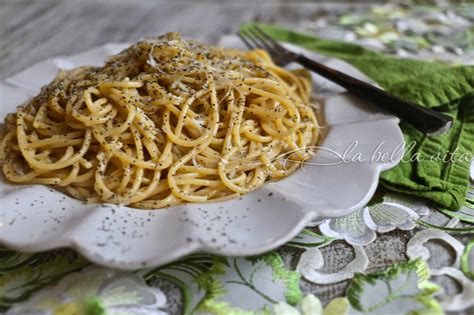The Ultimate Guide to Cacio e Pepe: A Roman Classic

`markdown
Preview: Discover the secrets to making authentic cacio e pepe, the iconic Roman pasta dish. From selecting the right ingredients to mastering the technique, this guide will have you serving up restaurant-quality cacio e pepe in no time!
What is Cacio e Pepe?
Cacio e pepe, Italian for "cheese and pepper," is a deceptively simple yet incredibly satisfying pasta dish hailing from Rome. It's a testament to the power of minimalism, relying on just four key ingredients: pasta, Pecorino Romano cheese, black pepper, and pasta water. Achieving perfect cacio e pepe requires careful attention to detail and a bit of practice.
The History of Cacio e Pepe
While its exact origins are debated, cacio e pepe's simplicity suggests a long history rooted in the pastoral traditions of the Roman countryside. Shepherds, often traveling for long periods, carried with them dried pasta, aged Pecorino Romano, and black peppercorns – all shelf-stable ingredients perfect for a quick and nourishing meal. This history contributes to the rustic charm and enduring appeal of cacio e pepe.
Key Ingredients for Authentic Cacio e Pepe
The quality of the ingredients is paramount when making cacio e pepe. Here's a breakdown:
Pasta: Traditionally, tonnarelli* (a thick, square spaghetti) is used. Spaghetti is a perfectly acceptable and more readily available substitute. Choose a high-quality bronze-die extruded pasta for a rough texture that helps the sauce cling.
- Pecorino Romano Cheese: This sharp, salty sheep's milk cheese is the heart and soul of cacio e pepe. Do not substitute with Parmesan!
- Black Pepper: Freshly cracked black pepper is essential. The coarser the grind, the more pronounced the peppery bite will be.
- Pasta Water: This starchy liquid is the magic ingredient that emulsifies the cheese and pepper into a creamy sauce.
- Cook the Pasta: Cook the pasta in generously salted boiling water until al dente. Reserve at least 1 cup of pasta water before draining.
- Toast the Pepper: While the pasta cooks, lightly toast the black pepper in a dry pan over medium heat until fragrant. This releases the pepper's essential oils and enhances its flavor.
- Create the Paste: In a bowl, gradually add a small amount of pasta water to the toasted pepper, creating a loose paste.
- Emulsify the Cheese: Gradually whisk grated Pecorino Romano into the pepper paste, adding more pasta water as needed to create a smooth, creamy sauce. The consistency should be similar to a thick cream.
- Combine and Toss: Add the drained pasta to the bowl with the cheese and pepper sauce. Toss vigorously and quickly, adding more pasta water as needed to coat the pasta evenly.
- Serve Immediately: Serve immediately, garnished with extra grated Pecorino Romano and freshly cracked black pepper.
- Clumpy Sauce: This is the most common problem. Avoid it by gradually adding the pasta water to the cheese and pepper, whisking constantly. Don't add too much water at once.
- Using Pre-Grated Cheese: Pre-grated cheese often contains cellulose, which prevents it from melting properly. Always grate your own Pecorino Romano.
- Not Salting the Pasta Water: Salting the pasta water is crucial for seasoning the pasta from the inside out.
- Cacio e Pepe with Truffle: Grate fresh black truffle over the finished dish for a luxurious twist.
- Spicy Cacio e Pepe: Add a pinch of red pepper flakes to the pepper paste for a touch of heat.
Mastering the Cacio e Pepe Technique
The key to perfect cacio e pepe is emulsifying the cheese and pepper into a smooth, creamy sauce without any clumps. Here's a step-by-step guide:
Common Cacio e Pepe Mistakes (and How to Avoid Them)
Overcooked Pasta: Overcooked pasta will not absorb the sauce properly and can become mushy. Cook the pasta al dente*.
Variations on Cacio e Pepe
While the classic recipe is perfect in its simplicity, here are a few variations you can try:
Cacio e Pepe with Guanciale: Add crispy fried guanciale (cured pork cheek) for a richer, more savory flavor. This brings it closer to pasta alla gricia*.
Cacio e Pepe: Nutritional Information
A serving of cacio e pepe is relatively high in carbohydrates and fat due to the pasta and cheese. However, it's also a good source of calcium and protein. The exact nutritional content will vary depending on the portion size and specific ingredients used.
Why Cacio e Pepe Remains Popular
The enduring popularity of cacio e pepe lies in its simplicity, satisfying flavor, and ease of preparation. It's a dish that can be enjoyed any time of year and is a true testament to the power of Italian cuisine. The minimal ingredient list also makes it surprisingly affordable and accessible.
Cacio e Pepe: Frequently Asked Questions
Q: Can I use Parmesan cheese instead of Pecorino Romano?
A: While technically you can, it is highly discouraged. Pecorino Romano has a much sharper, saltier flavor that is essential to the authentic taste of cacio e pepe. Parmesan will result in a milder, less flavorful dish.
Q: How do I prevent my cacio e pepe from being dry?
A: Add enough pasta water to create a creamy sauce. Toss the pasta vigorously to emulsify the cheese and water. Don't be afraid to add more pasta water as needed.
Q: What's the best type of black pepper to use?
A: Freshly cracked black pepper is always best. Coarsely ground pepper will provide a more pronounced peppery bite.
Q: Can I make cacio e pepe ahead of time?
A: Cacio e pepe is best served immediately. The sauce can dry out if it sits for too long. If you must prepare it in advance, keep the sauce separate from the pasta and toss them together just before serving. Add a little extra pasta water to loosen the sauce if necessary.
Q: Where does Cacio e Pepe originate from?
A: Cacio e Pepe originates from Rome, Italy.
`





